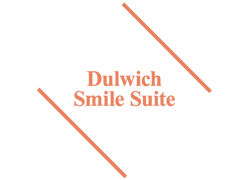Orthodontic fixed braces have been used to achieve straighter teeth for many years, in fact, the first fixed braces as we know them today were developed in the late 19th century by American dentist, Edward Angle. In the early 20th century, the most commonly used material for braces was gold, so only the wealthy could afford them, then in the 1930s, stainless steel was introduced, making braces more accessible.
The real revolution for orthodontics happened in the 1970s when new techniques allowed for brackets to be fixed directly to the teeth, rather than fixed to a band that was wrapped around the teeth. Whilst technology has improved, allowing for faster, more sophisticated and more effective teeth straightening treatments, the way that fixed braces work remains similar today.
Braces help you to make the best of your teeth, helping to fix a range of problems, including crooked teeth, crowded or protruding teeth, correcting bite issues and closing gaps between teeth. Children, teenagers and adults benefit from orthodontic treatment, but if you are interested in fixed braces, do you understand how braces brackets work?
How Orthodontic Fixed Braces Work
Traditional fixed braces, or train tracks as they are often known, are made up of brackets and stainless steel archwires. Brackets are fixed to each tooth using a special adhesive, and controlled using the archwire, which is then held tightly in place by clips or elastic ligatures (elastic bands). Over a period of time, this archwire gently moves teeth into the desired position. The archwire is replaced and tightened periodically in order to ensure the teeth move a little at a time.
This process can take a number of months, or even years, depending on the severity of your teeth condition. An orthodontist will also work to move teeth into different directions and positions, depending on the issues that they are aiming to correct.
Teeth alignment problems are fixed in stages. The first stage of braces treatment is to move the teeth so that they align properly and sit level. Once the teeth sit side by side, bite problems such as underbite, overbite or crossbite can be addressed. Finally, Orthodontists focus on fine tuning, ensuring all teeth have moved into the ideal position before braces are removed.
What are Self Ligating Brackets?
Self ligating braces differ slightly from traditional braces in that they use a built-in system to secure the archwire to the brackets, so no elastic ligatures are required. Self ligating brackets may use an active sliding spring clip mechanism, which presses against the archwire to provide an active force to move the teeth, or passive brackets that use a simple sliding mechanism.
Whilst self ligating brackets do need to be tightened and adjusted periodically, they use lower forces and friction to move the teeth. Some of the benefits of this kind of treatment include less discomfort in some cases, shorter visits to the orthodontist, as there are no ligatures to replace, and easier cleaning as ligatures are absent.
Braces Aftercare
All braces must be cared for as recommended by an orthodontist, and normal oral health routines should be maintained to keep the teeth and gums healthy. Following the removal of fixed braces, retainers are required to ensure the teeth remain in their new position for the long term.
Learn More about Fixed Braces
To learn more about orthodontic braces or to arrange a consultation, contact us today on 020 8265 9797.






